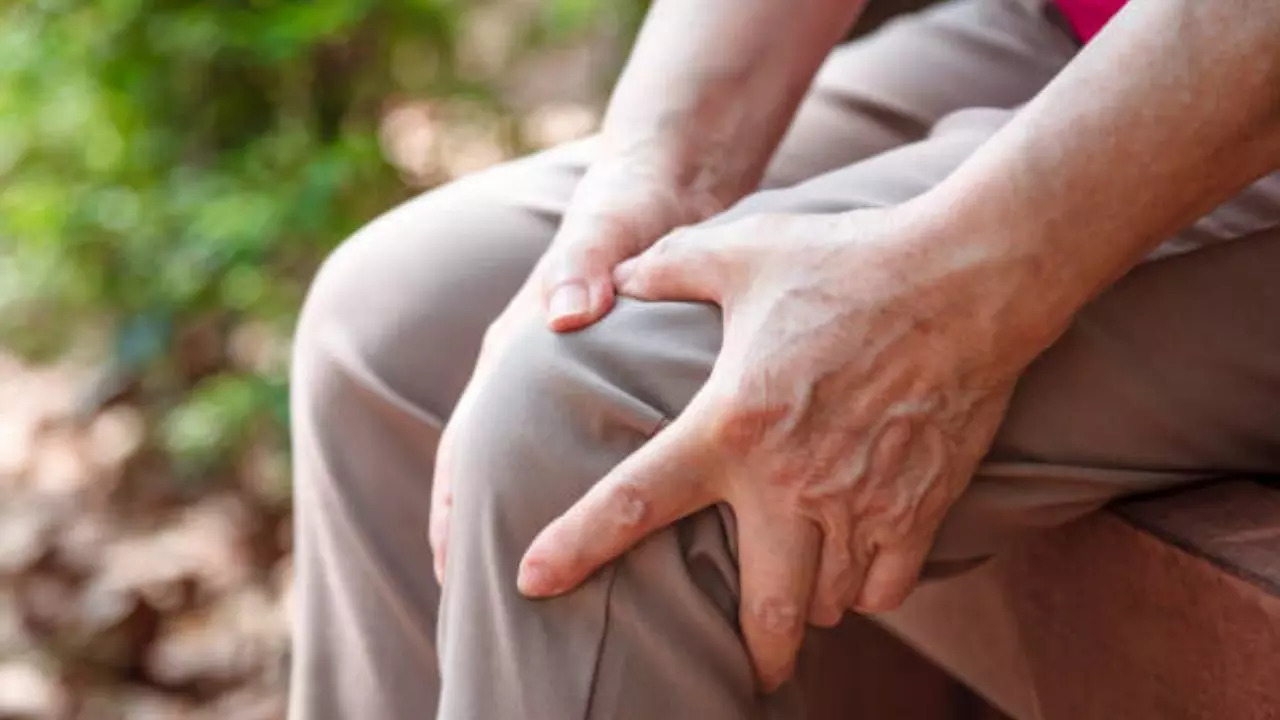Contents
-
news
-
Health
Say goodbye to winter joint pain! Try these essential relief tips today
Cold often increases joint pain, especially for arthritis patients. Experts share tips for managing cold-related joint stiffness. His main advice includes staying active, keeping joints warm, practicing stretching, and eating an anti-inflammatory diet to reduce pain. Simple lifestyle changes can protect joint health this season.

Say goodbye to winter joint pain! Try these essential relief tips today (Image credit: iStock)
As temperatures drop, many people experience an increase in joint pain and stiffness, especially those with arthritis or previous joint injuries. Cold weather can increase joint discomfort due to changes in air pressure, less physical activity and the natural tendency to stay indoors. Fortunately, there are effective ways to manage and reduce cold-related joint pain. Leading experts Dr. Abhijeet Agashe, Consultant Orthopedic Surgeon, Sahyadri Super Specialty Hospital, Pune, and Dr. Sandeep Yadav, Rheumatologist, PD Hinduja Hospital, Mumbai, share valuable tips to keep your joints healthy this season.
Why does joint pain increase in winter?
Winter can be challenging for joint health, as cold weather often reduces physical activity, which can lead to stiff joints. Cold temperatures also affect blood circulation, tightening the muscles around the joints and limiting flexibility, making pain worse. According to Dr. Yadav, “Seasonal changes in arthritis symptoms have been documented for centuries. For people suffering from arthritis, age-related wear and tear, or past injuries, winter often increases joint stiffness and discomfort. “
Dr. Agashe explains that cold air reduces barometric pressure, which causes tissue expansion and increases sensitivity and joint pain. Addressing these seasonal effects on joints starts with two principles: keeping joints warm and moving.
Expert Tips to Deal with Joint Pain in Winter
1. Keep joints warm
Staying warm can help reduce joint pain. Dress in layers and wear thermal gloves, socks or knee covers if specific joints feel cold. “The application of local heat, such as a heating pad, warm bath, or even hot fomentation followed by rubefacients (hot oil), can soothe stiff joints,” advises Dr. Agashe. This added warmth helps increase blood flow, improve flexibility and reduce stiffness.
2. Stay active with low-impact exercises
Maintaining mobility is important for joint health. “Engaging in daily activities like household chores, cooking or light shopping can keep joints flexible, especially in older people,” says Dr Yadav. Low-impact exercises such as walking, light stretching or indoor swimming can improve joint mobility without causing stress. Dr. Agashe says physical therapy exercises designed to strengthen the muscles around the joints provide additional support, reducing stress on the joints.
3. Stretch daily
Stretching is especially helpful for reducing stiffness. Dr. Yadav recommends a routine of simple stretches covering all major joints for 10-15 minutes daily. “Incorporating yoga or Pilates can maintain muscle flexibility and joint mobility, which is essential for managing stiffness,” he says.
4. Eat a healthy diet for joints
A diet rich in anti-inflammatory nutrients can reduce joint pain. Omega-3 fatty acids found in fish, nuts and seeds reduce inflammation. “Vitamin D levels often drop in the winter, so it’s beneficial to discuss supplements with a doctor,” advises Dr. Agashe. Antioxidants from fruits and vegetables also help fight inflammation and support overall joint health.
5. Stay hydrated
Proper hydration is essential for lubrication of joints. Even in the colder months, staying hydrated maintains the synovial fluid around the joints, which is important for smooth, pain-free movement. “Dehydration can worsen joint pain, so make sure you’re drinking plenty of water every day,” says Dr. Agashe.
6. Control your weight
Extra weight puts extra stress on weight-bearing joints, such as the hips and knees. Maintaining a healthy weight through diet and regular exercise can reduce joint pain and prevent further damage. It is especially beneficial for people with arthritis or a history of joint injuries.
7. Use local heat therapy
Applying a heating pad before sleeping or taking a warm bath can help relieve morning stiffness in winter. Dr. Yadav describes heat therapy as a simple and effective way to reduce stiffness, especially when combined with morning stretching.
8. Adhere to prescribed medications
For people suffering from arthritis, it is essential to follow prescribed medications to reduce inflammation and control pain. Dr. Yadav emphasizes, “Regular intake of the medicine can prevent inflammation in the affected joints and this is the most important factor in managing joint pain during winters.”
9. Practice mind-body techniques
Mind-body techniques like yoga and meditation improve flexibility, ease joint pain, and reduce stress, which can sometimes increase pain perception. “These exercises are beneficial not only for physical flexibility but also for managing the mental aspects of pain,” says Dr. Agashe.
10. Consult a specialist for advanced treatment
If joint pain gets worse or is accompanied by other symptoms such as swelling, redness or warmth around the joints, it is essential to seek medical advice. Doctors may recommend advanced treatments depending on the severity of pain, including prescription medications or injections into the joints.
Get the latest news live on Times Now with breaking news and top headlines from around the world.


